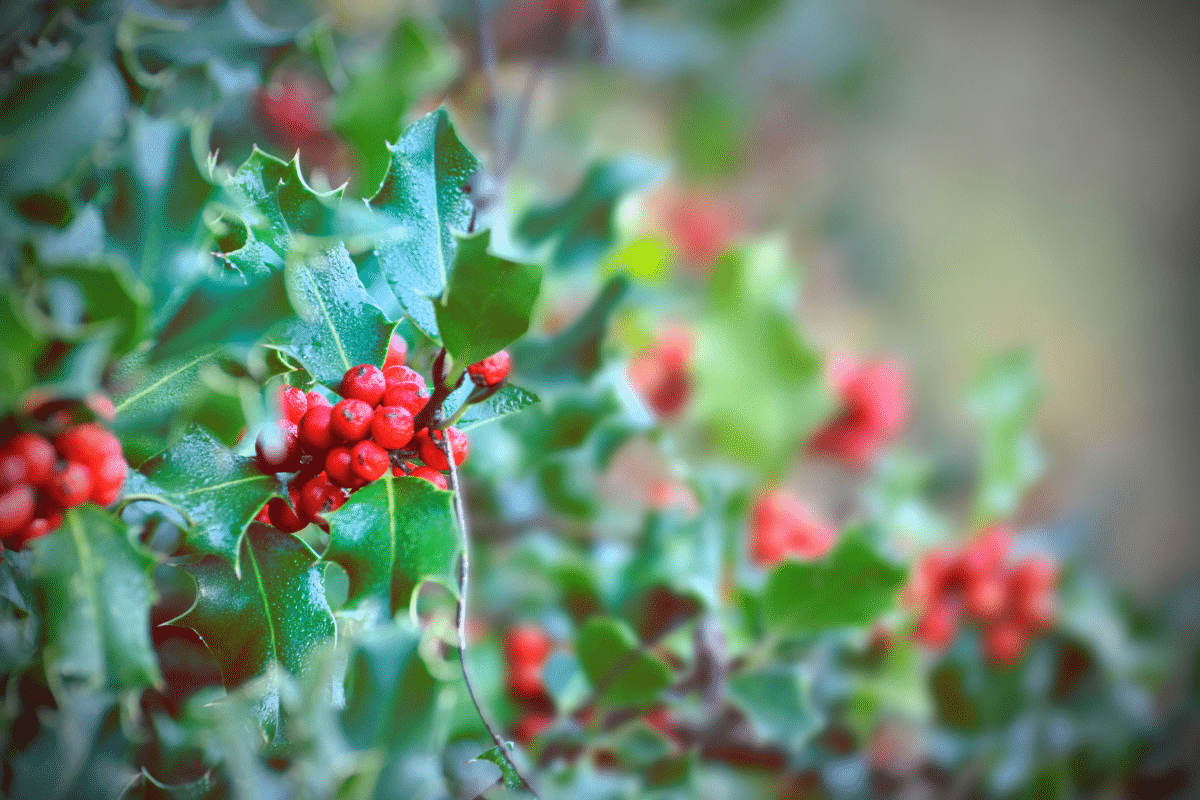Why Holly and Poinsettias Deck Our Halls

Holly and poinsettias aren't just beautiful to look at; they carry centuries of tradition and significance, especially during the holiday season. Their rich symbolism and vibrant colors make them staples in Christmas and winter decor. This post delves into the history, symbolism, and care of these iconic plants, exploring why they deck our halls year after year.
History of Holly in Holiday Traditions


Holly, or Ilex aquifolium, has deep roots in ancient cultures, stretching back to pre-Christian times:
- Ancient Rome: Holly was used in the festival of Saturnalia, decorating homes to ward off evil spirits.
- Druids: It was considered sacred, symbolizing eternal life due to its evergreen nature, and was worn to keep away sickness.
- Christianity: With the spread of Christianity, holly was adapted into holiday decorations because of its vibrant, red berries, symbolizing the blood of Christ, and spiny leaves, reminiscent of the crown of thorns.
🌿 Note: Not all holly varieties have red berries; male holly plants do not produce fruit, so for berries, you'll need a female plant with a male for pollination.
Symbolism and Folklore of Holly


Holly’s symbolism is rich and varied:
- Fertility and Hope: The evergreen nature and bright berries symbolize hope for the future and eternal life.
- Protection: Hung in homes, it was believed to ward off lightning, evil spirits, and protect against enchantment.
- Christmas Joy: The bright red berries contrast with the dark green leaves, bringing color and cheer during the winter months.
The Magic of Poinsettias at Christmas


Poinsettias, with their vibrant red bracts, have become synonymous with Christmas:
- Origin: Native to Mexico, where they were called cuetlaxochitl, the flowers of the poinsettia were associated with purity, celebrating the birth of Jesus.
- Introduction to the US: Joel Roberts Poinsett, the US Ambassador to Mexico, introduced the plant to the US in the early 1800s, and it was named after him.
- Folklore: Mexican legend tells of a girl named Pepita who offered weeds as a gift at church, and upon placing them at the altar, they miraculously turned into beautiful red flowers, symbolizing the Star of Bethlehem.
Growing and Caring for Holly and Poinsettias


Here are some tips to ensure your holly and poinsettias thrive:
| Plant | Light | Watering | Temperature |
|---|---|---|---|
| Holly | Full sun to partial shade | Regular watering, but soil should dry out between | Cold hardy, thrives in USDA zones 5-9 |
| Poinsettia | Bright, indirect light | Keep soil moist but not waterlogged, especially when bracts start to show color | 60-70°F, avoid drafts |

🌱 Note: Poinsettias are sensitive to cold, so they should be placed away from cold windows or doors during the winter.
By maintaining these conditions, both plants will not only survive but can bring joy to your holiday decor year after year. Holly can be kept as a landscape shrub, and with the right conditions, poinsettias can re-bloom, showcasing the beauty of these plants beyond the holiday season.
In summary, holly and poinsettias are much more than mere holiday decorations. They bring with them a rich tapestry of history, folklore, and deep-rooted symbolism, making them not only beautiful additions to our homes but also a link to centuries of tradition. Their evergreen leaves and vibrant colors remind us of hope, life, and the joyous spirit of the season.
Why are poinsettias associated with Christmas?

+
Poinsettias are associated with Christmas due to their bright red bracts, which symbolize the star that led the Wise Men to Jesus, and the story of Pepita, who brought weeds to the church that turned into beautiful red flowers.
Are poinsettias poisonous to pets?

+
While not highly toxic, poinsettias can cause mild stomach upset if ingested by pets, so they should be kept out of reach.
Can you grow holly in a container?

+
Yes, holly can be grown in containers. Ensure the pot has good drainage, and use a well-draining soil mix to prevent root rot.